6. The Revenant
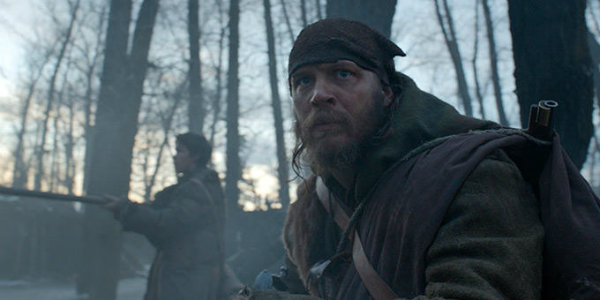
The Revenant is easily better than the movies before it from a technical aspect. But this may be a film you only see once. Still, it’s probably worth the watch for how Hardy lights a fire under the scenes he’s in.
This film centers around Leonardo DiCaprio’s desperation to win an Oscar. It also involves the redemption story of explorer Hugh Glass (DiCaprio) after he’s left for dead by confidant John Fitzgerald, who also murders Glass’s son.
There is a beautiful misery to it all, but DiCaprio’s overacting does get in the way from time-to-time. Call it a “committed” performance or “Oscar-bait”, but one thing that’s undeniable is the incredible, wintry cinematography. It’s a little overindulgent, but it’s easy to get entrapped within it.
Ultimately, Hardy’s John Fitzgerald is nothing but a rugged coward who cares only about his pelts. But that makes him a perfect fit for this world, just a man acting like a wild animal, looking after only himself amid merciless elements.
Leo may’ve won his Oscar, and that’s all good and well. But there’s no doubt he was playing a role, and Hardy was living in his.
5. The Dark Knight Rises
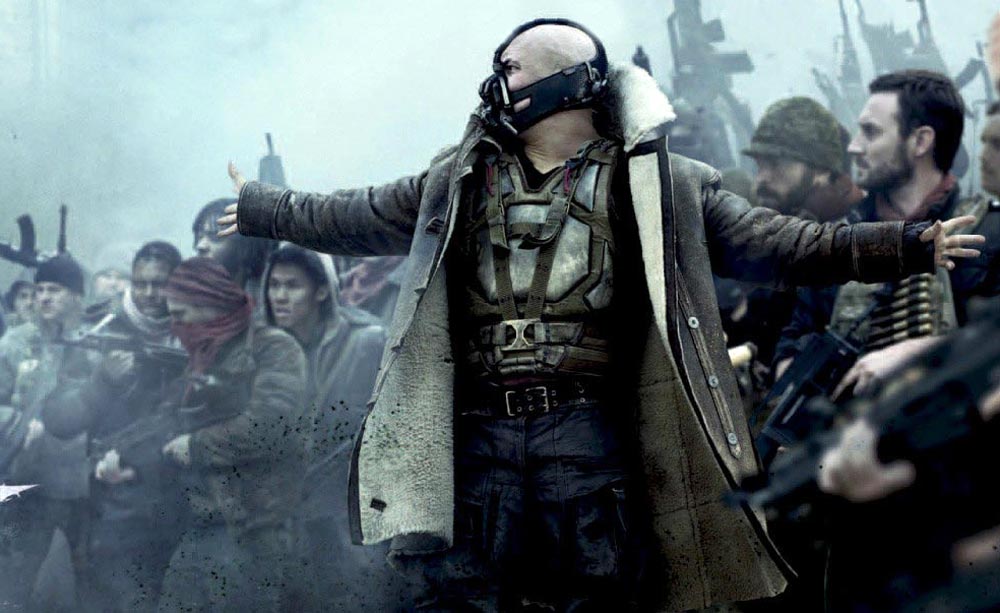
Oh, all the many things we could bash TDKR for. The dozens of plot holes, the poor editing, half a movie without Batman, the impractical ending, the . . .
But through all of this, there are some truly amazing sequences of blockbuster filmmaking that set themselves apart. From narrative and technical perspectives, the film was as ambitious as The Dark Knight. Sure, it missed the mark in areas. But for all the misses, there’s something to counter it. The intensity in the action. The feeling of real stakes. The epic scope and set pieces. And also, the performances all across the board.
And Hardy, aside from not understanding a line or two from him, brought a unique and ensnaring energy to the film as the antagonistic Bane. He was a villain that truly saw himself as some sort of savior, mixing an incredible physical presence with moral complexities.
It’s likely the worst movie of the trilogy, and to some it may be the low-point of Nolan’s filmography (which many on this site aren’t fond of to begin with).
But what TDKR does do is portray real world anxieties and pulls them off in a movie led by a man dressed like a bat. There are failures along the way. But there are also great cinematic triumphs that help cap one of the better big-budget trilogies of all-time.
4. Warrior
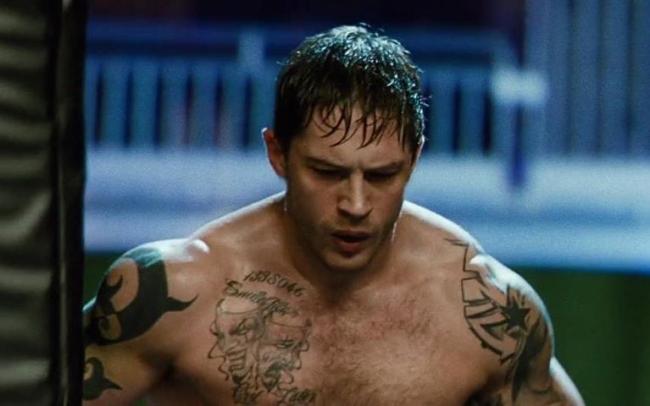
Though it certainly isn’t one of the top 200 movies of all-time, as IMDb states (it’s the site that has Forrest Gump 12th, after all), it showcases one of the better sibling rivalries in cinema history.
Joel Edgerton and Hardy star as Brendan and Tommy Conlon, respectively, two MMA fighters working through haunting issues in their lives. Brendan, a former fighter-turned-teacher, turns back to the ring when his family’s financial troubles become overwhelming. Tommy, on the other hand, is an ex-Marine looking for redemption.
Both brothers end up entering the same mega MMA tournament and—as you can probably guess—begin a crash course toward one another.
Warrior could be just another schmaltzy, underdog, roll-out-the-training-montage fighting movie. But its conflict is set up better, its actors make it all look realer, and the brothers’ relationship is dug into more. So, by the end of the film, it’s earned its moment of brotherly love.
Adding to the family drama is Nick Nolte, who plays the father of the two brothers. It all may seem like a sappy arrangement, but the brutality and struggle within and beyond the fighting keeps things realistic.
It may not have been capable without such a grounded trio of actors.
3. Dunkirk
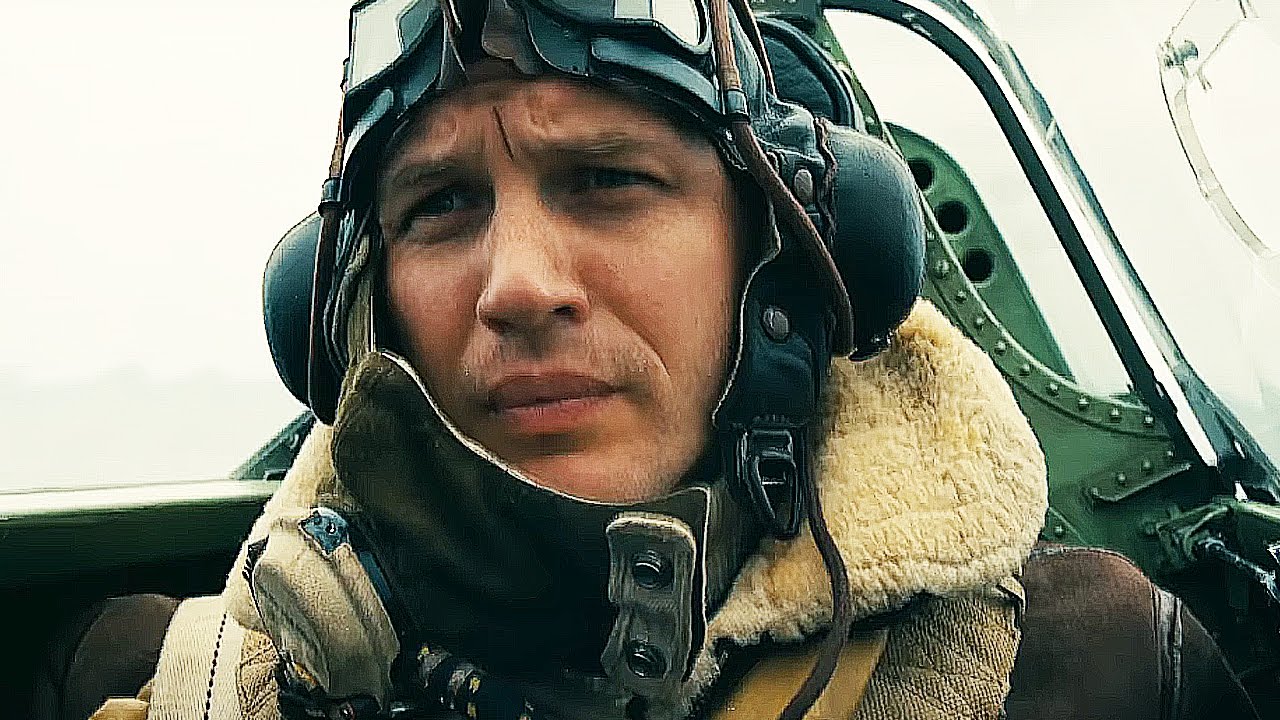
Once again, Hardy was required to spend considerable time in a mask (The Dark Knight Rises, Mad Max: Fury Road). But much like in his Bane and Max performances, he expresses so much in this with simply his brow and eyes.
This depiction of the allied forces’ rescue attempts on the beach of Dunkirk shows a true test of will. It makes the cast as a whole worth rooting for, aside from the obvious fact they’re the allied soldiers. But there isn’t as much connection with many of the characters, especially not on the level of a Bruce Wayne or Interstellar’s Cooper, both from previous Nolan movies.
But that has mostly to do with the little time and amount of dialogue each is given. But by the end of everything, Hardy’s Farrier seems to be the one to latch onto for audiences. He makes good use of every second of screen time, as does Cillian Murphy as a fellow pilot.
Dunkirk is a much more precise film than Nolan had with Interstellar and The Dark Knight Rises. He came back with a well-grounded war/survival film, one that’s calculating but not as mechanical as some work he’s had in the past.
It may not make for his or Hardy’s best work. But it’s a welcome addition to both of their filmographies.
2. Inception
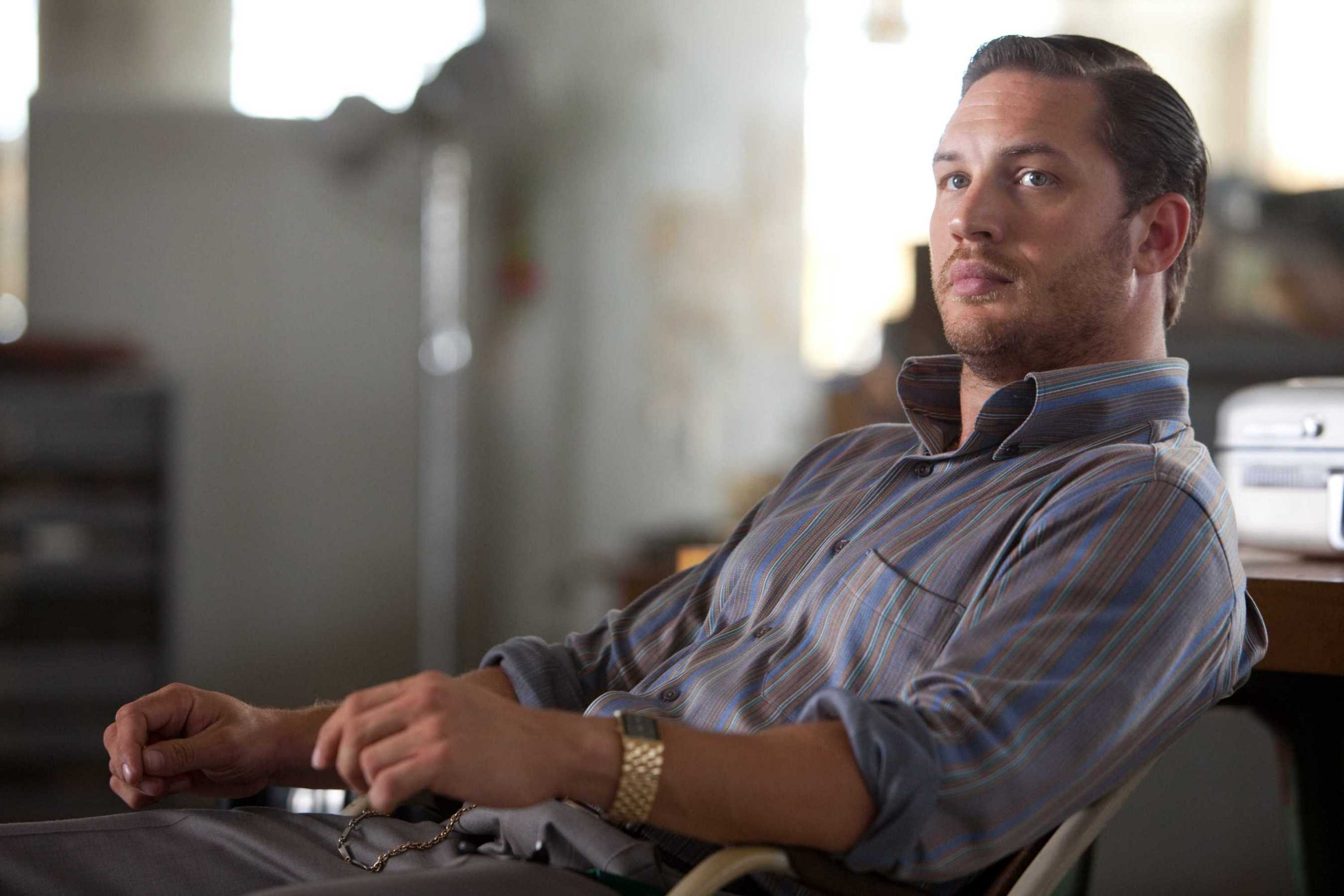
There’s an array of opinions to be had about Inception. It’s been called everything from the magnum opus of one of the generation’s best directors to an over-the-top, pretentious piece of junk from a Hollywood hack.
It is far from being either.
Exploring dream worlds and the minds of others has been done several times in cinema, so maybe the whole “visionary filmmaking” aspect shouldn’t be noted. But Nolan builds an interesting set of worlds nonetheless.
The rules are often explained in a clunky way, and in awkward moments to boot. But the story of Leonardo DiCaprio’s Cobb and his journey to get back to his family supplies an emotional core that’s not appreciated enough.
The fear of losing reality is a theme that really hits home in Inception, and the movie may also still be Nolan’s greatest visual achievement. Interstellar’s worm hole may be the single coolest thing to look at in a Nolan movie, but in its entirety, this is his best-looking film.
As for Hardy, his Eames is a smooth operater who plays an integral part in the movie with all the tricks up his sleeve. Whether as the brawn of the crew or as the trickster, he delivers. And so does Hardy’s acting.
1. Mad Max: Fury Road
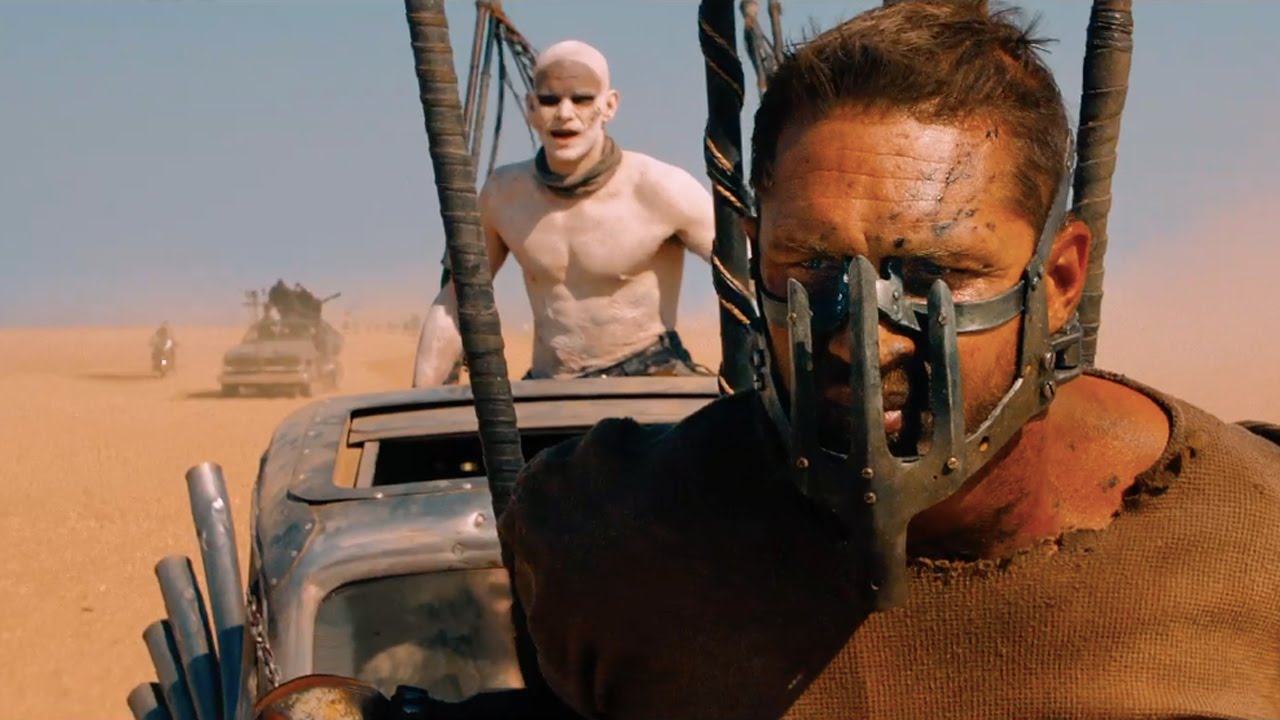
Was there ever much doubt here?
Mad Max: Fury Road isn’t a top-5 Tom Hardy performance, and he has little dialogue despite being the so-called “lead”. But the actor fits well within this world, one that plays setting to not only the greatest post-apocalyptic movie of all-time, but one the best action movies in recent history.
We can go through all the boxes Fury Road checks. Its cinematography is breathtaking even in its most putrid-looking locations. The set pieces are practically perfect and simply can’t be matched by any other film. And its pace is insanity—just as it should be—with just a smidge of self-reflection.
There’s a character worth attaching to (Charlize Theron’s Furiosa), one that grows on you (Nicholas Hoult’s Nux), and Hardy at the center of it all. Some might’ve been disappointed by how little he said during the film. But Mel Gibson wasn’t exactly a chatter-box in the trilogy, and Hardy came close to matching his lone-wolf type and edge-of-insanity persona.
All in all, this is both the most re-watchable film on this list and the least flawed. It’s an easy victory for Fury Road. Don’t expect it to be unseated on this list of best Tom Hardy movies anytime soon.